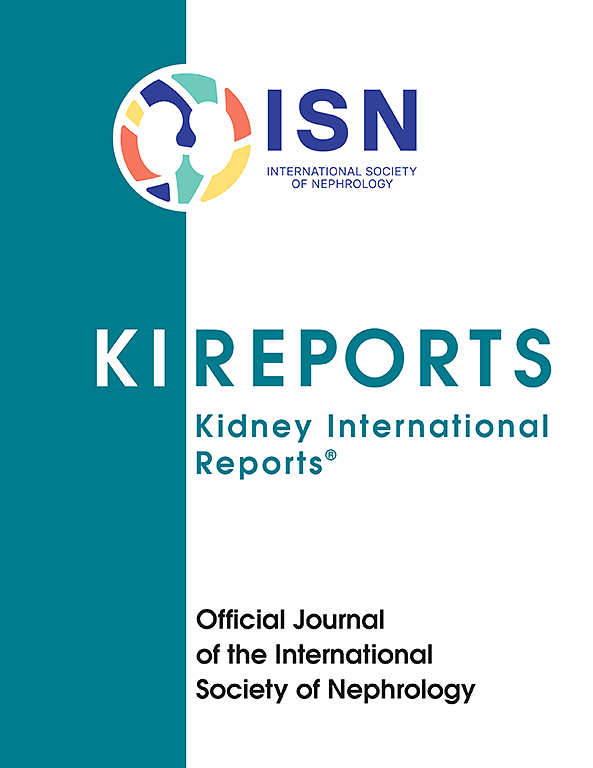Association Between Albuminuria and Glomerular Filtration Rate With Incident Frailty
IF 5.7
2区 医学
Q1 UROLOGY & NEPHROLOGY
引用次数: 0
Abstract
Introduction
The association between estimated glomerular filtration rate (eGFR) and albuminuria with incident frailty in generally healthy older individuals is unclear. We investigated whether baseline eGFR or urine albumin-to-creatinine ratio (UACR) are associated with incident frailty and assessed them using 2 separate methods: a modified Fried frailty phenotype (FP), and a deficit accumulation frailty index (FI).
Methods
This was a secondary analysis of the ASPirin in Reducing Events in the Elderly (ASPREE) randomized trial cohort, which enrolled independent, healthy, older adults aged ≥65 years in Australia and the USA. Time to incident frailty was analyzed using discrete time survival analysis.
Results
In total, 16,965 participants were included using the FP, mean age was 75.0 ± 4.5 years, median baseline eGFR was 78.6 ml/min per 1.73 m2 (interquartile range [IQR]: 67.6–89.5), and the median UACR was 0.80 mg/mmol (0.50–1.50). Data to generate the FI outcomes were available for 12,272 participants. The relationships between eGFR and both incident FP and FI were nonlinear, such that an eGFR < 30 or ≥ 95 ml/min per 1.73 m2 was significantly associated with an increased risk of incident frailty. For every doubling of baseline UACR, risk of incident frailty increased by 4% using the FP (hazard ratio [HR]: 1.04, 95% CI: 1.02, 1.07) and the FI (HR: 1.04, 95% confidence interval [CI]: 1.01–1.07).
Conclusion
In older, generally healthy adults, both low and high eGFRs were associated with increased risk of incident frailty. Doubling of UACR, even at low levels, was independently associated with incident frailty.

求助全文
约1分钟内获得全文
求助全文
来源期刊

Kidney International Reports
Medicine-Nephrology
CiteScore
7.70
自引率
3.30%
发文量
1578
审稿时长
8 weeks
期刊介绍:
Kidney International Reports, an official journal of the International Society of Nephrology, is a peer-reviewed, open access journal devoted to the publication of leading research and developments related to kidney disease. With the primary aim of contributing to improved care of patients with kidney disease, the journal will publish original clinical and select translational articles and educational content related to the pathogenesis, evaluation and management of acute and chronic kidney disease, end stage renal disease (including transplantation), acid-base, fluid and electrolyte disturbances and hypertension. Of particular interest are submissions related to clinical trials, epidemiology, systematic reviews (including meta-analyses) and outcomes research. The journal will also provide a platform for wider dissemination of national and regional guidelines as well as consensus meeting reports.
 求助内容:
求助内容: 应助结果提醒方式:
应助结果提醒方式:


